The other day, I went to the Sindhi market at Kubernagar, Ahmedabad to look at the Diwali goodies available. Kubernagar is one of the Sindhi-dominated areas of Ahmedabad, so I was sure I will get the Sindhi snacks and decorations I wanted.
Post-Partition of India in 1947, Sindhis had to leave their homeland Sindh due the violence and looting after the division. Many fled to India often with little money and no land, houses or wealth that they owned in Sindh. Families were scattered as employment opportunities took them to various parts of the country. Kubernagar area, along with Sadarnagar and Vadaj, was built especially for the Sindhis, who migrated to Ahmedabad. Initially, the Sindhi families were put up in tents on the bank of river Sabarmati till low-cost houses were provided to them against the claims of the properties they had left behind in Sindh. Sindhis worked hard, often doing menial work like selling peanuts on trains, selling vegetables or plying rickshaws to make their ends meet. Remember, most of these had lands and businesses back in Sindh with people working under them. But, without looking back or complaining against the circumstances, the enterprising Sindhis got down to work and started life anew. Today, the areas of Kubernagar, Sardarnagar or Vadaj are thriving and prosperous with Sindhis owning properties and businesses all over the city. The people living here have kept their rich Sindhi heritage and traditions alive and are a must visit places for those who want to enjoy Sindhi foods and have an authentic Sindhi experience.
At Kubernagar market, among the usual Sindhi foods like singaran ji mithai, revdi (sesame seeds candy), kachriyu (fryums), lai/ chikki (praline), papads, etc., I came across bhuri/bhurrani mitti/ buri (pic given below). I had read about this snack for the first time on www.sindhirasoi.com, a Sindhi food blog by Alka Keswani. She reminisced about having bhuri as a child and described it as “a pale yellow delicacy that would crumble in hands and melt in the mouth.”
As a child, she did not appreciate its “chalky aftertaste or slightly fermented floral flavours with earthy undertones.”
Her further research and updates on her blog led me to the blogsite of an Iraqi food blogger, Nawal Nasaralla, who refers to bhuri as ‘khirret’, as it is called in the local language. Khirret is the pollen of bardi, an aquatic plant that belongs to the Typha spieces and grows in the marshes of Southern Iraq.
The entire plant from its rhizomes, leaves, stalks to its pollen is edible.
The yellow pollen of the bardi or the cat-tail plant, as it is referred to, is collected in spring and sun-dried. It is sifted, mixed with sugar or date juice and steamed over a boiling pot of water. The resulting clay like clumps are khirret or bhuri.
Bhuri is given to children and pregnant women for its high protein content and immunity boosting properties. It is a vegetarian/vegan snack.
Bhuri has indeed travelled far from Iraq, to Sindh and to Kubernagar, Ahmedabad, India.
Here are some of the purchases I made at the market.
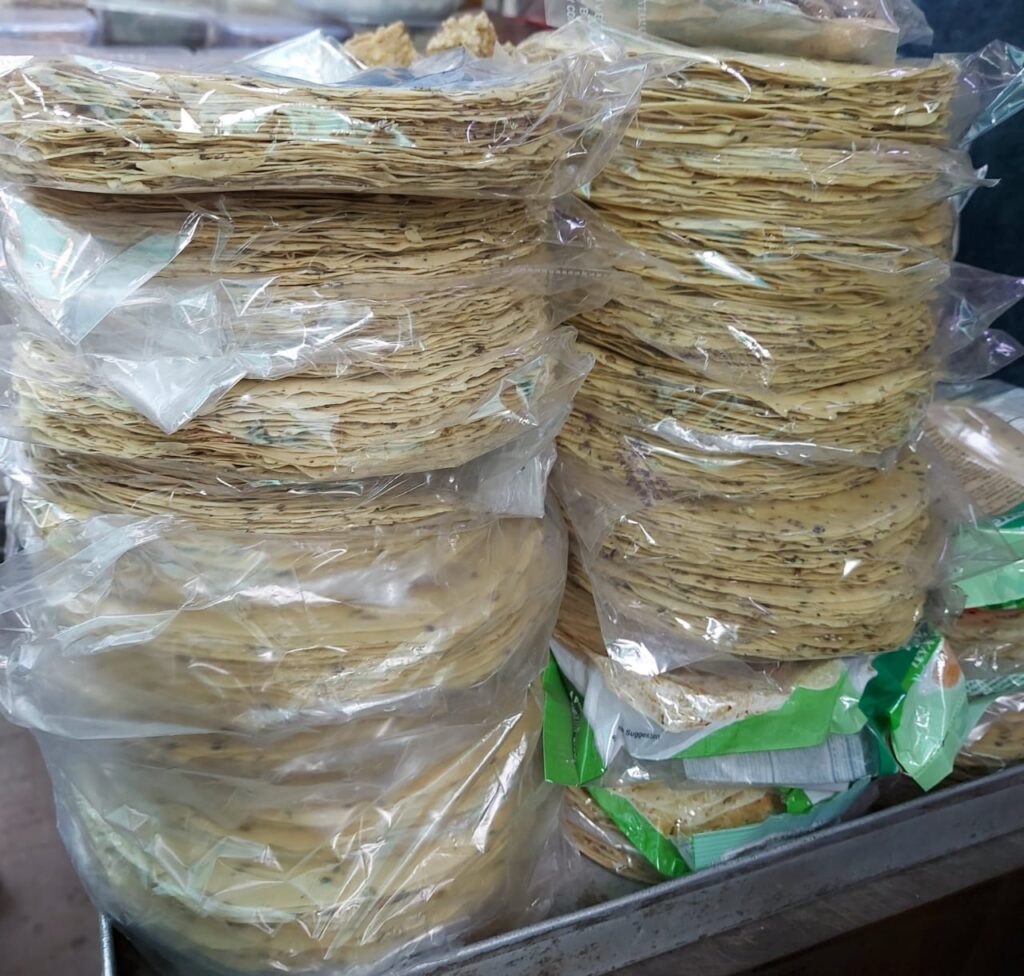
PIC: SINDHI PAPAD- MANY SINDHI HOUSEHOLDS SURVIVED POST PARTITION MAKING PAPADS AND WADIYUN
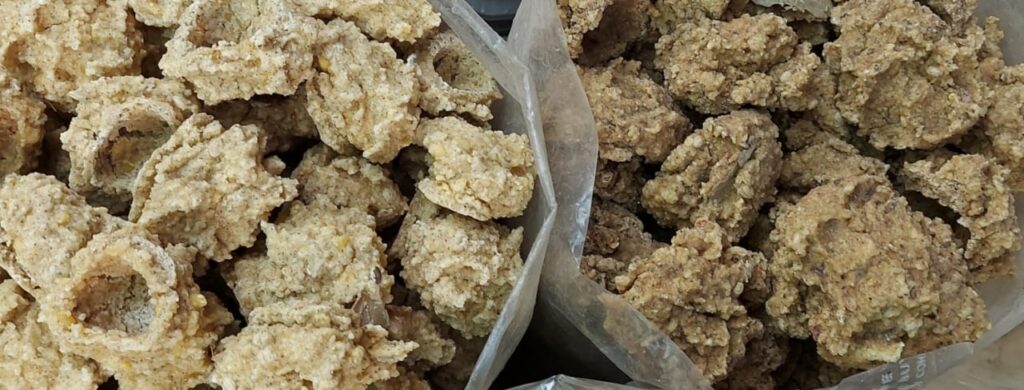
PIC: WADIYUN -MADE OF LENTILS AND MASALAS, WADIYUN IS A PUNJABI INFLUENCE ON SINDHIS. ANY SINDHI GOING TO AMRITSAR HAS TO BUY WADIS FROM THERE.
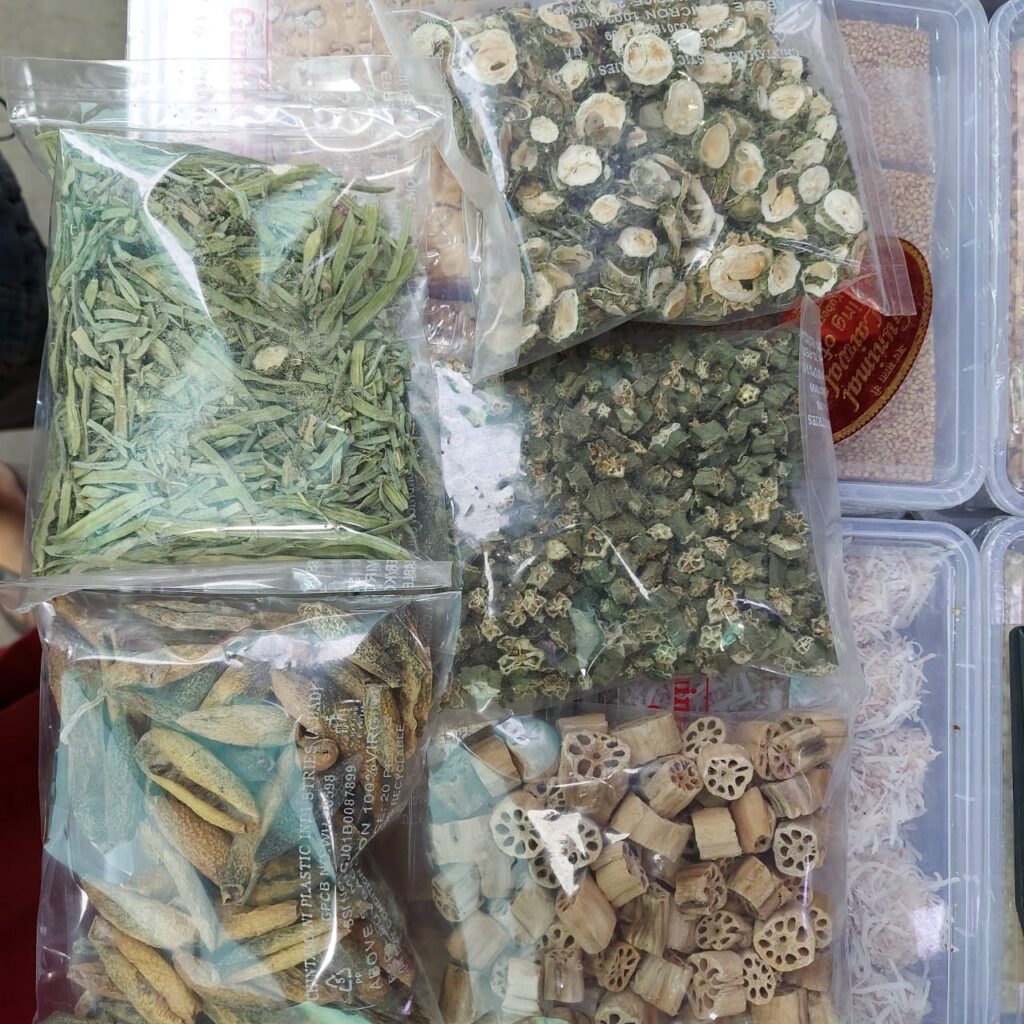
PIC: KACHRIYU -WHAT IS A SINDHI MEAL WITHOUT PAPAD AND KACHRIYUN (SUN DRIED FRYUMS)? THE ONES IN THE PIC ARE SUN DRIED VEGETABLES (CLOCKWISE FROM TOP)- BITTER GOURD, LADIES FINGER, LOTUS STEM , A KIND OF SMALL SIZED GOURD(DON’T KNOW ITS ENGLISH EQUIVALENT)AND CLUSTER BEANS
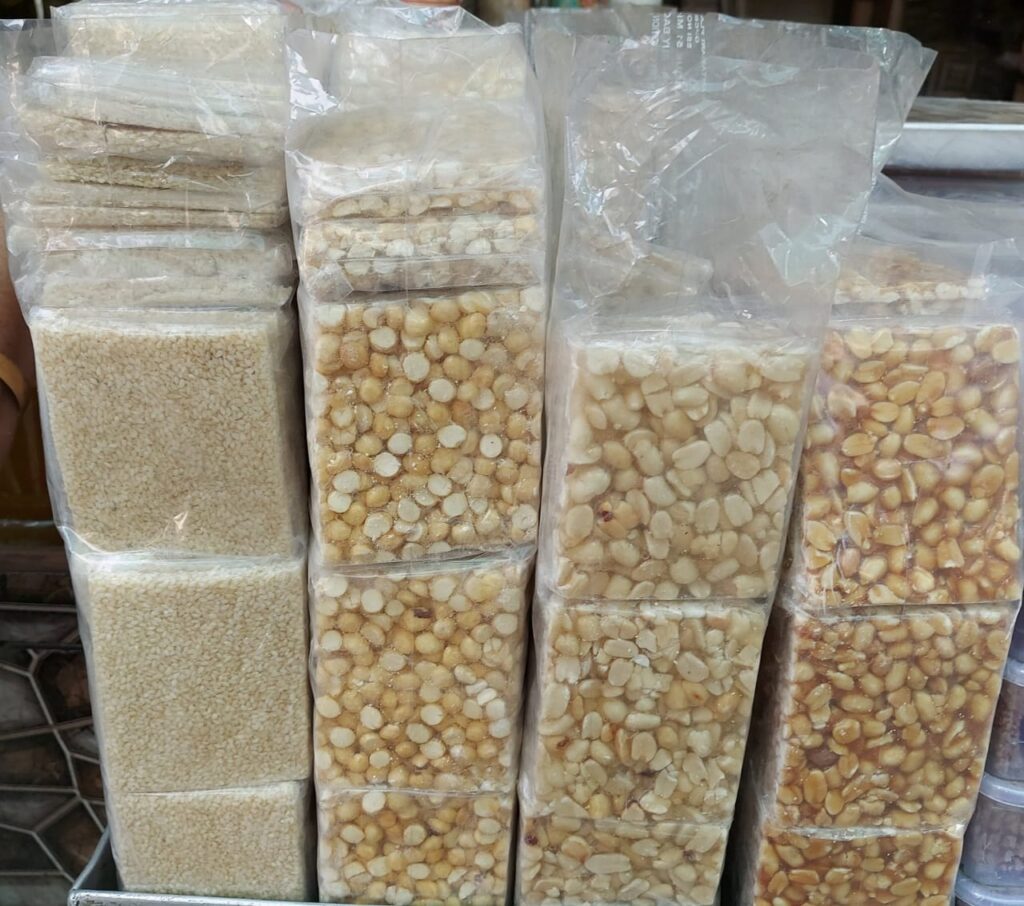
PIC: A SINDHI DIWALI IS INCOMPLETE WITHOUT A VARIETY OF CHIKKI OR LAI WHICH ARE PRALINES MADE OF SEV OR MURMULA, PEANUTS, SESAME SEEDS, DRIED COCONUT SLICES OR GRAM MADE EITHER IN SUGAR OR JAGGERY
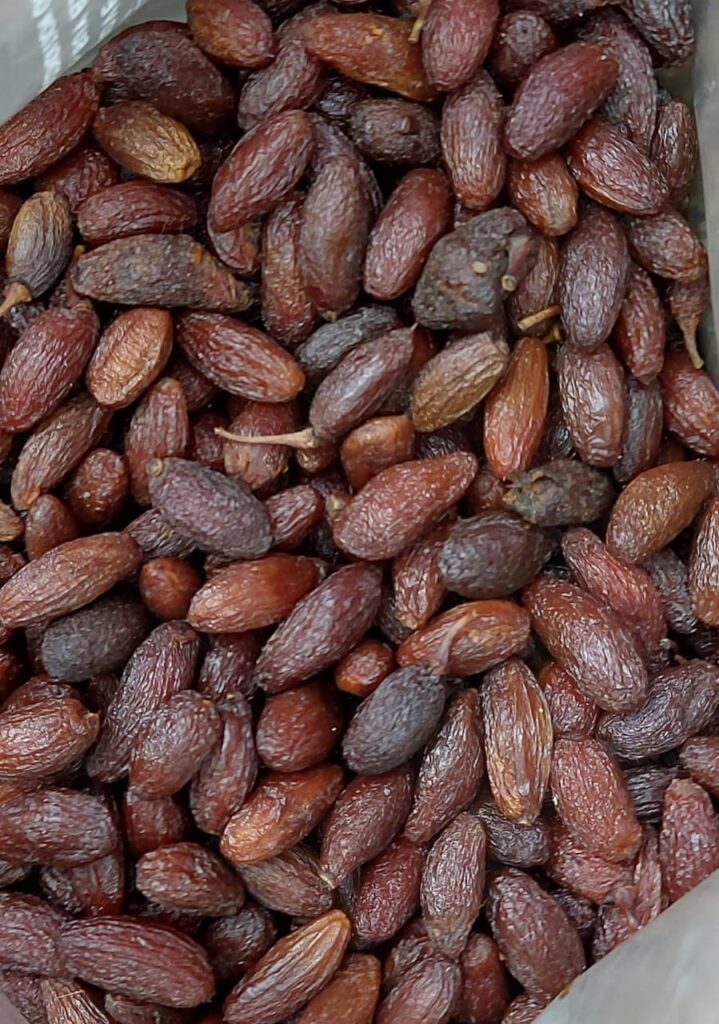
PIC: DRIED KHIROLI
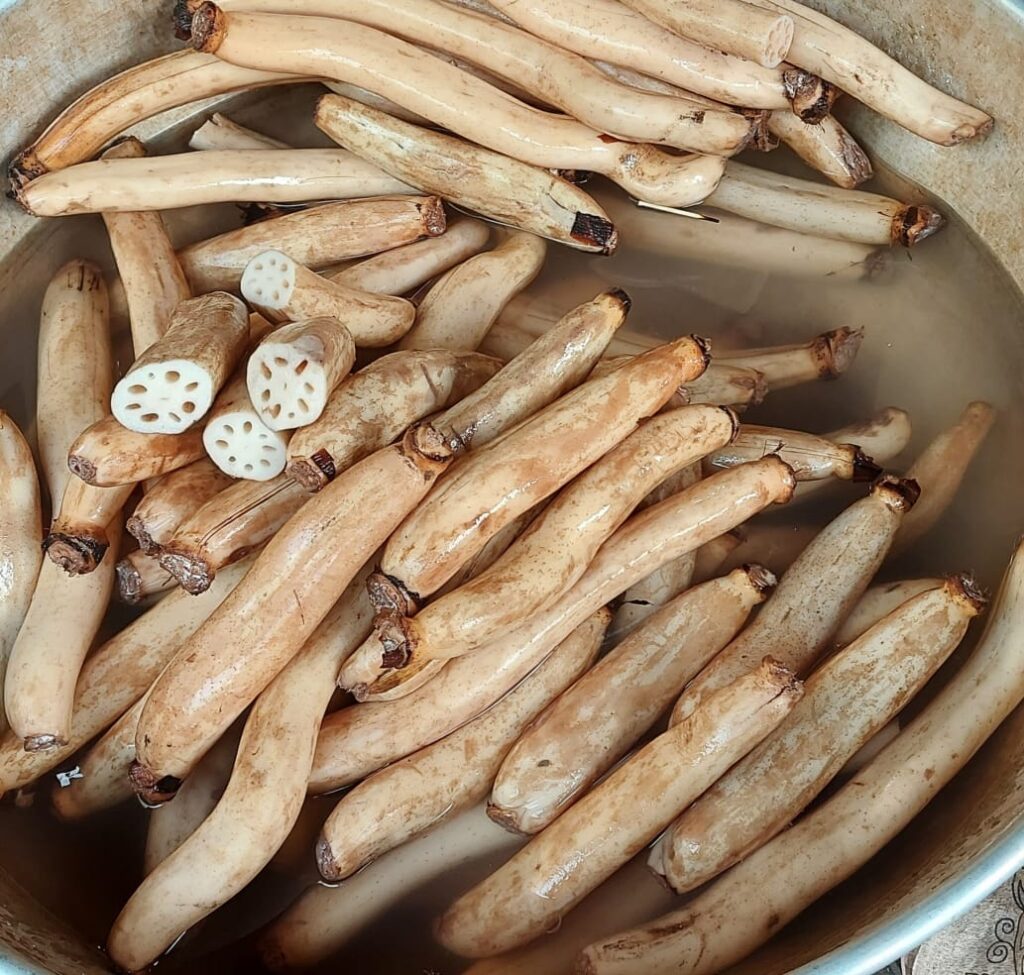
PIC: BHEE OR LOTUS STEM- THE KING OF SIINDHI CUISINE. IT IS STORED UNDER WATER SO IT DOESN’T DRY OUT.
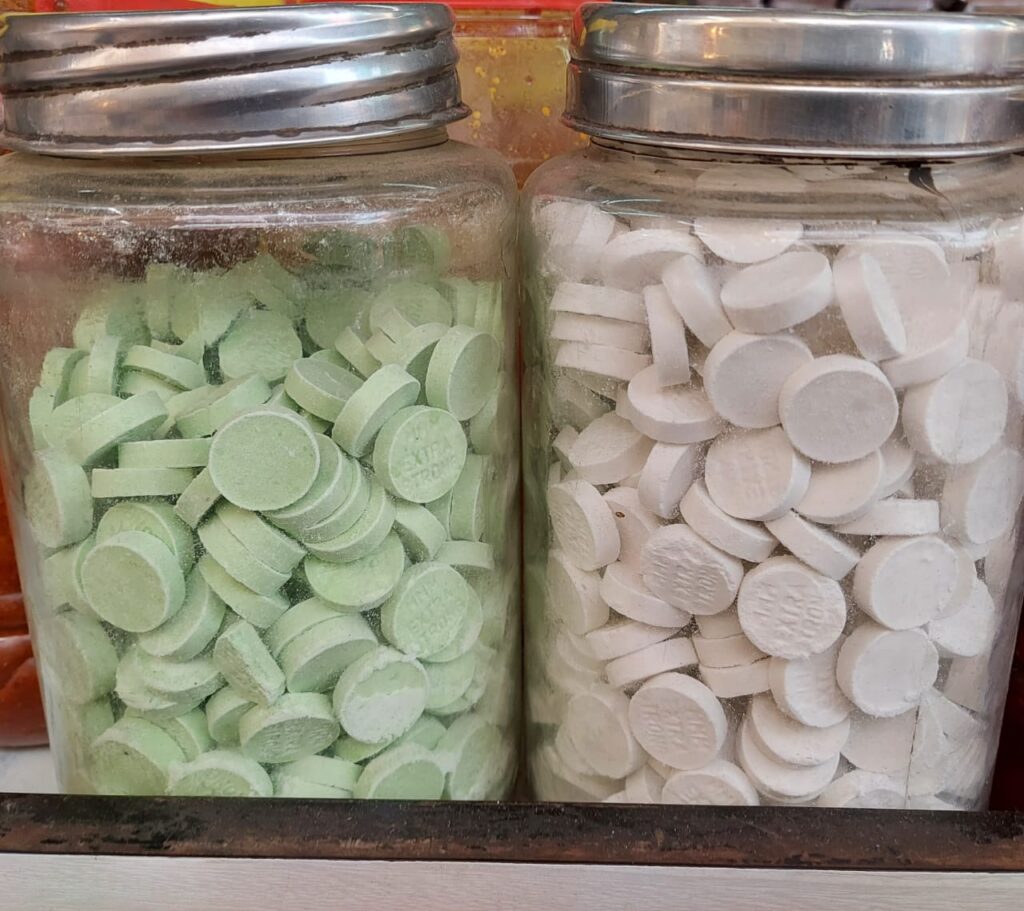
PIC: PHUDINE JI TIKKI (PEPPERMINT) – POPLULAR AMONG KIDS WHO FAKE STOMACH ACHES TO GET ONE
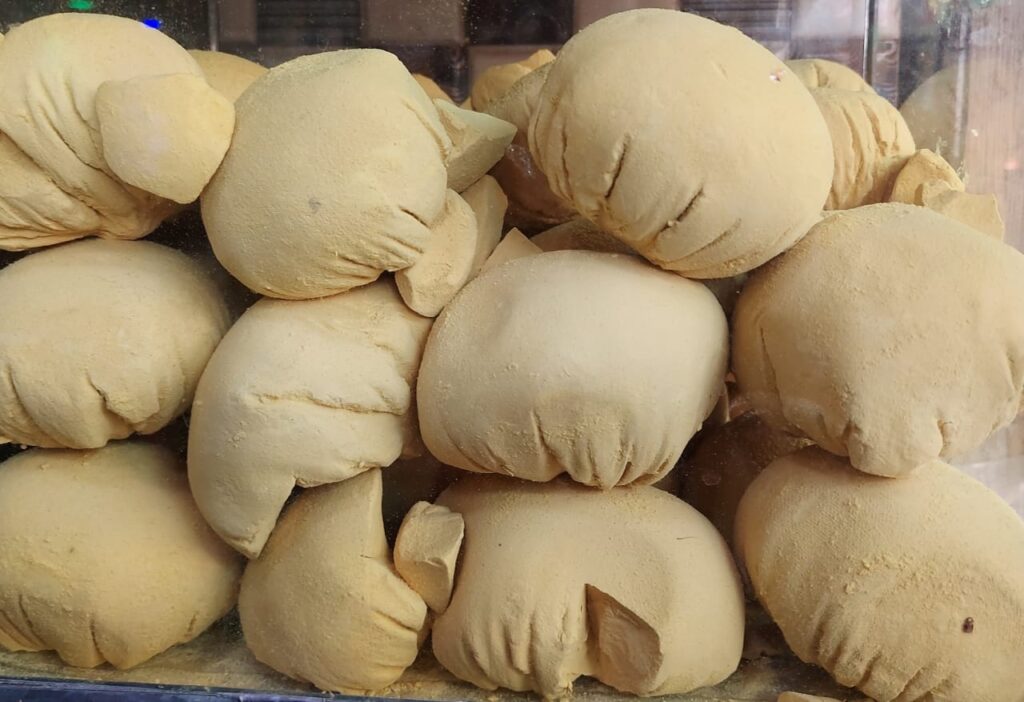
PIC: BURI/BHURI OR BHURRANI MITTI

PIC: HATALDI – FOR MOST SINDHI HOUSES, DIWALI PUJA IS INCOMPLETE WITHOUT A HATALDI. MADE OF CLAY, STRAW AND PAPER, THIS STURCTURE REPRESENTS SHOPS, HENCE ASSOCIATED WITH WEALTH. USUALLY THE NUMBER OF HATALDI IN THE PUJA IS EQUAL TO THE NUMBER OF MALE MEMBERS IN THE HOUSE. THEY ABSORB NEGATIVE ENERGIES OF THE HOUSE AND BRING PROSPERITY.

PIC: IN SOME SINDHI HOUSES, A CLAY MODEL OF LAXMI MATA IS DISPLAYED WITH CLAY TOYS AND AN AKHAND DIY( AN OIL LAMP THAT BURNS THE ENTIRE DIWALI NIGHT) ON THE EVE OF DIWALI.
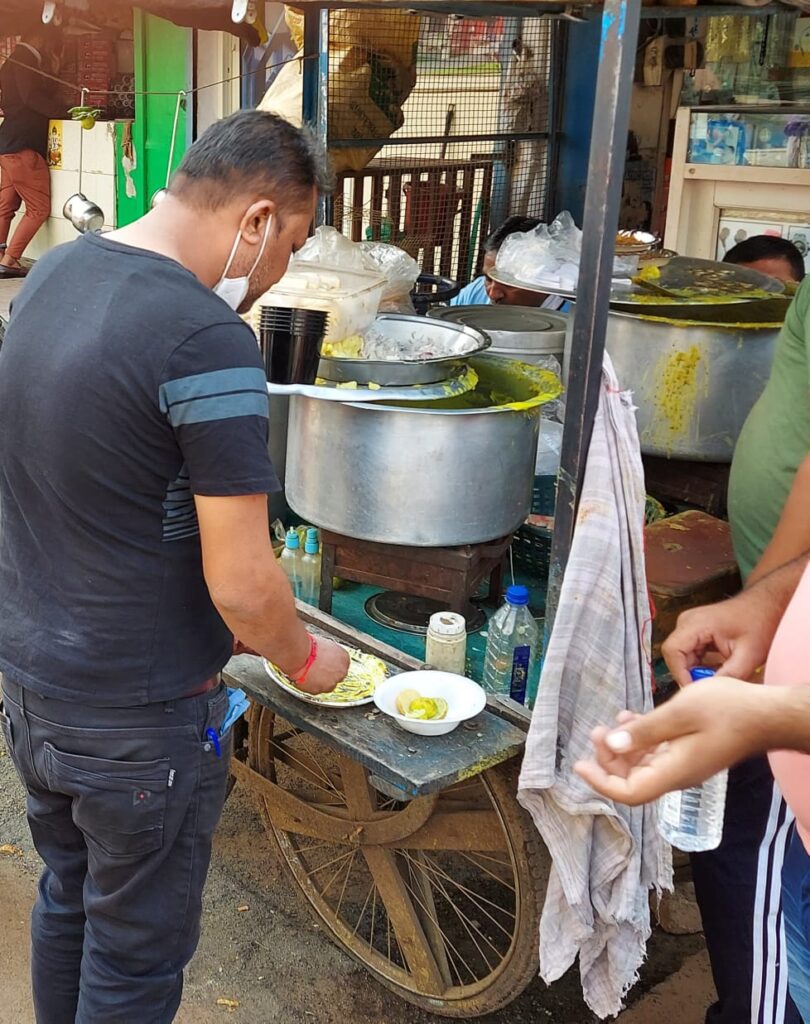
PIC: VENDORS SELL DAL-PAKWAAN FOR THE HUNGRY SOULS
Hope you all enjoyed the visit to Kubernagar with me. There is much more to the market than the pictures which cannot be expressed in words and can only be experienced -the hustle-bustle, the food and the smell. Do visit the market when you visit Ahmedabad to enjoy the Sindhi culture that is palpable here- both tangible and intangible.
For more information on bhuri:
http://nawalcooking.blogspot.com/2013/03/khirret-cattailtypha-pollen-gift-of.html
Jyoti Mulchandani
Ahmedabad


Give a Reply